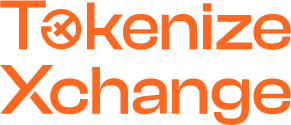Dive Deeper into the Ethereum Blockchain
Last week, we gave our readers an insight into Ethereum. It’s a smart contract enabled blockchain and financial transactions on the network are powered by Ethereum’s native currency — Ether (ETH).
Remember that Ethereum is an open and decentralised public network, which means that its records are not withheld by a central authority. While it’s illegal to access a bank’s entire transaction history, anyone can interact with the Ethereum blockchain and explore the network’s activities through blockchain or ‘block’ explorers.
Etherscan is currently the leading blockchain explorer for Ethereum. It displays crucial information like the current price of Ether, the amount of transactions, and the average gas price.
More importantly, Etherscan also allows users to search for transactions to and from wallet addresses. Simply put, it’s a digital, global, and live financial statement; a search engine for anyone to check and observe real-time transactions on the Ethereum network.
This is also why we often say that blockchain technology is transparent and accessible.
Check out our easy peasy guide on Ethereum: What Exactly is Ethereum?
Creating a wallet and funding it with Ether
Similar to physical wallets that store traditional fiat currencies (government-issued money like SGD or USD), cryptocurrency wallets allow users to receive, store, and send their cryptocurrencies.
Note: It’s common for newbies to purchase and then securely store their cryptocurrencies on exchanges such as Tokenize.
There are multi-cryptocurrency wallets but in the context of this article, we’ll just be recommending the MetaMask Wallet — A browser extension and mobile application that allows users to store their Ether and interact with Ethereum-enabled platforms.
Examples of Ethereum-enabled platforms include Compound and Aave . These are decentralised finance (DeFi) platforms built on the Ethereum blockchain with transaction fees paid in Ether — which explains the need for a wallet and a block explorer like Etherscan to track transactions.
Think of wallet addresses as unique “bank account” numbers.
See the “View on Etherscan”? That’s how users can check the status of their transactions in real-time. Whether you’re transferring Ether from an exchange into a wallet, or from a wallet into an Ethereum-enabled platform, it’s easy to know the status of your transfer thanks to Etherscan and Ethereum’s transparent nature.
Here’s an example of a wallet address display (the balance as well as transactions to and from the wallet):
And a sample transaction:

And a short breakdown of some important terms!
Transaction Hash — Kind of like a receipt number. It’s a unique code that’s used to identify a specific transaction.
Status — Whether or not your transfer has been verified by a miner.
Transaction Fee — The amount of Ether paid to the miner for verifying the transaction.
Gas price — Gas is a unit. It measures the amount of computational effort needed to execute an operation like a transaction. Think of it as the amount of ‘gas’ needed to power a car.
Therefore, gas price is the amount of Ether per unit of gas that the user wants to pay as a fee to the miner. During periods of network congestion, users can speed up transactions by setting a higher gas price. Gas price can be calculated as ‘Gwei’= 1×10^-9 Ether.
If you’ve made it this far we hope that you’re not TOO bamboozled about block explorers and the nitty-gritties of Ethereum.
Block explorers are technical and can be intimidating at first which is why it’s essential to have your own hands-on experience!
Explore the Ethereum Blockchain: https://etherscan.io
Purchase Ether: https://tokenize.exchange
Download the MetaMask wallet: https://metamask.io
Keep Tokenizing! Till next week.
Here at Tokenize, we strive to provide the best possible platform for cryptocurrency trading. More importantly, we believe in sharing our passion on all things blockchain, crypto, and DeFi.
Disclaimer
Cryptocurrencies are subjected to high market risk and volatility despite high growth potential. Users are strongly advised to do their research and invest at their own risk.







